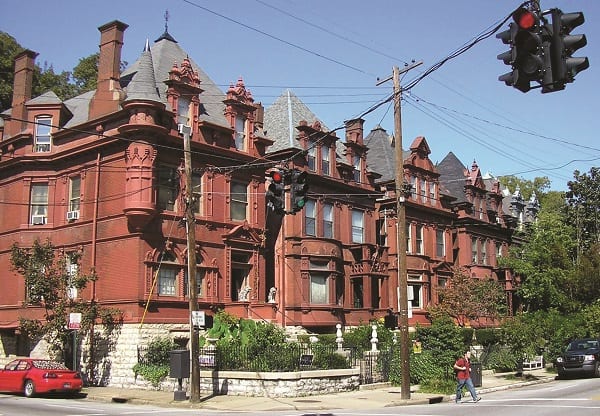The D.E.A.L. (Dining, Entertainment, Attractions & Lodging)
Strolling Through History, Museums & a Mega Cavern in Louisville
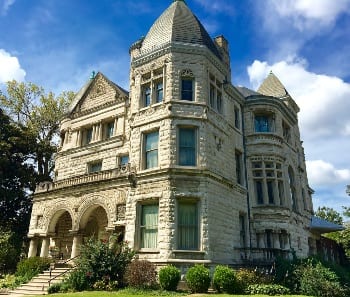
by Jeanne Brei
Revel in Southern charm, hospitality, history and architecture by just strolling through Old Louisville—the largest collection of grand Victorian homes and the third largest National Preservation District in the U.S. Within its 48-block area, there are examples of Romanesque Revival, Beaux Arts, Queen Anne, Italianate, Chateauesque and Victorian mansions. The Conrad-Caldwell Museum (pictured right), a historic house museum located on St. James Court, features a large collection of original period pieces.
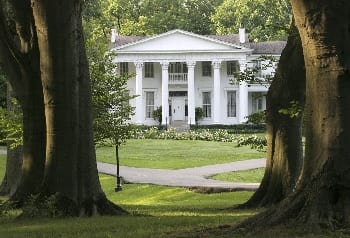 Some of the city’s most notable historic homes include the Thomas Edison House, the Farmington Carriage House and Whitehall (pictured left). Edison’s home is preserved as a museum with a collection of artifacts and inventions from his life. The 200-year-old Farmington Carriage House and its surrounding buildings are fully restored to reflect its days as a hemp plantation home. Whitehall was transformed from a two-story brick house into a southern-style, Greek mansion in 1909 and is open for tours and events.
Some of the city’s most notable historic homes include the Thomas Edison House, the Farmington Carriage House and Whitehall (pictured left). Edison’s home is preserved as a museum with a collection of artifacts and inventions from his life. The 200-year-old Farmington Carriage House and its surrounding buildings are fully restored to reflect its days as a hemp plantation home. Whitehall was transformed from a two-story brick house into a southern-style, Greek mansion in 1909 and is open for tours and events.
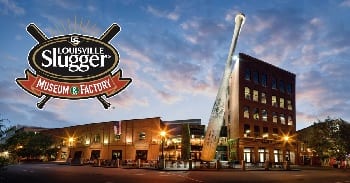 In addition to historic homes, Louisville is home to many museums and galleries including the Speed Art Museum, the Frazier History Museum (weaponry), Louisville Science Center, Kentucky Museum of Art & Craft, Glassworks, Zephyr Gallery, and the museums you can’t find anywhere else, including the Louisville Slugger Museum & Factory (tour the factory, see the world’s biggest bat, a 120-foot replica—six stories tall, 68,000 pounds— of Babe
In addition to historic homes, Louisville is home to many museums and galleries including the Speed Art Museum, the Frazier History Museum (weaponry), Louisville Science Center, Kentucky Museum of Art & Craft, Glassworks, Zephyr Gallery, and the museums you can’t find anywhere else, including the Louisville Slugger Museum & Factory (tour the factory, see the world’s biggest bat, a 120-foot replica—six stories tall, 68,000 pounds— of Babe 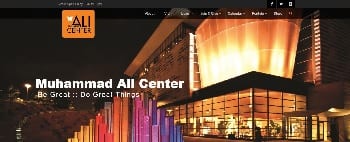 Ruth’s bat and in the Bat Vault put on gloves and hit with replica bats of legends like Babe Ruth, Jackie Robinson and Derek Jeter), the Muhammad Ali Center (shadow box with the champ, watch boxing clips in a model ring) and the Kentucky Derby Museum (there’s two floors of exhibits and displays which explore the history and traditions of the Kentucky Derby, as well as the history of thoroughbred racing). Visitors to the museum can watch The Greatest Race, a documentary, in a 360-degree theater. Plus, the track is included in the tour by walking or van-guided tours.
Ruth’s bat and in the Bat Vault put on gloves and hit with replica bats of legends like Babe Ruth, Jackie Robinson and Derek Jeter), the Muhammad Ali Center (shadow box with the champ, watch boxing clips in a model ring) and the Kentucky Derby Museum (there’s two floors of exhibits and displays which explore the history and traditions of the Kentucky Derby, as well as the history of thoroughbred racing). Visitors to the museum can watch The Greatest Race, a documentary, in a 360-degree theater. Plus, the track is included in the tour by walking or van-guided tours.
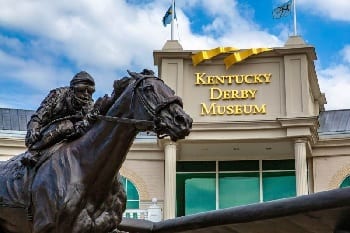 Louisville’s Churchill Downs is best known as the home of the Kentucky Derby, the city’s biggest annual event. Held the first weekend in May since 1875, the Kentucky Derby draws an average of 160,000 visitors each year. The opening event for the Kentucky Derby Festival is Thunder Over Louisville, a 28-minute fireworks show preceded by the Thunder Air Show, one of the top five air shows in the country, with more than 100 planes performing six hours of diving and acrobatic stunts.
Louisville’s Churchill Downs is best known as the home of the Kentucky Derby, the city’s biggest annual event. Held the first weekend in May since 1875, the Kentucky Derby draws an average of 160,000 visitors each year. The opening event for the Kentucky Derby Festival is Thunder Over Louisville, a 28-minute fireworks show preceded by the Thunder Air Show, one of the top five air shows in the country, with more than 100 planes performing six hours of diving and acrobatic stunts.
But if you’re looking for some adventure you can do year-round, check out the 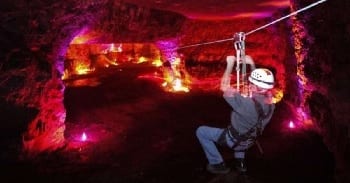 Louisville Mega Cavern (pictured left). Encompassing about 100 acres with more than 4million square feet of underground space, the Louisville Mega Cavern is part of 17 miles of corridors and passageways beneath the city of Louisville. It’s a man-made cavern, originally a limestone quarry with an average temperature of 58 degrees year round, and has been open to tourists since 2009. This former limestone mine offers tours by tram or zipline, a mountain bike park, and a ropes course.
Louisville Mega Cavern (pictured left). Encompassing about 100 acres with more than 4million square feet of underground space, the Louisville Mega Cavern is part of 17 miles of corridors and passageways beneath the city of Louisville. It’s a man-made cavern, originally a limestone quarry with an average temperature of 58 degrees year round, and has been open to tourists since 2009. This former limestone mine offers tours by tram or zipline, a mountain bike park, and a ropes course.
And outdoor lovers will love the more than 120 public parks in the metro area—famed landscape architect Frederick Law Olmstead, who designed both New York’s Central Park and the U.S. Capitol grounds, designed Louisville’s beloved Cherokee Park and Iroquois Park. With a 2.4-mile scenic walking loop, fenced dog park, and bird sanctuary, Cherokee Park is one of the 50 most visited parks in the U.S. (at nearly 500,000/year). Iroquois Park is 739 acres of hills, woods and paths and is best known for its panoramic views, its large open-air amphitheater and golf course. Waterfront Park is also a favorite re creation area. River buffs can walk over the Ohio River on the Big Four Bridge (a former railroad bridge) which is open to walkers and bicyclists on their way to Jeffersonville, Ind.
creation area. River buffs can walk over the Ohio River on the Big Four Bridge (a former railroad bridge) which is open to walkers and bicyclists on their way to Jeffersonville, Ind.
Or you could cruise the Ohio River on the oldest river steamboat still in continuous use today. Over 100 years old, the Belle of Louisville (pictured right) has been a National Historic Landmark since 1989 and offers a nightly cruise—with or without dinner. The Spirit of Jefferson runs year-round and the Belle of Louisville is summer only.
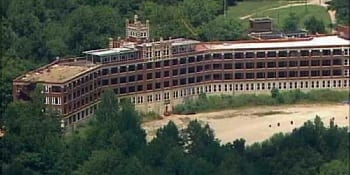 And for ghost hunters, the Waverly Hills Sanatorium (pictured left) is known as one of the most haunted places in the world and has been featured on many TV/radio shows. Listed on the National Historic Register for its Tudor Gothic Revival style architecture, it opened in 1920 as a two-story tuberculosis hospital, and more than 60,000 people have died there.
And for ghost hunters, the Waverly Hills Sanatorium (pictured left) is known as one of the most haunted places in the world and has been featured on many TV/radio shows. Listed on the National Historic Register for its Tudor Gothic Revival style architecture, it opened in 1920 as a two-story tuberculosis hospital, and more than 60,000 people have died there.






